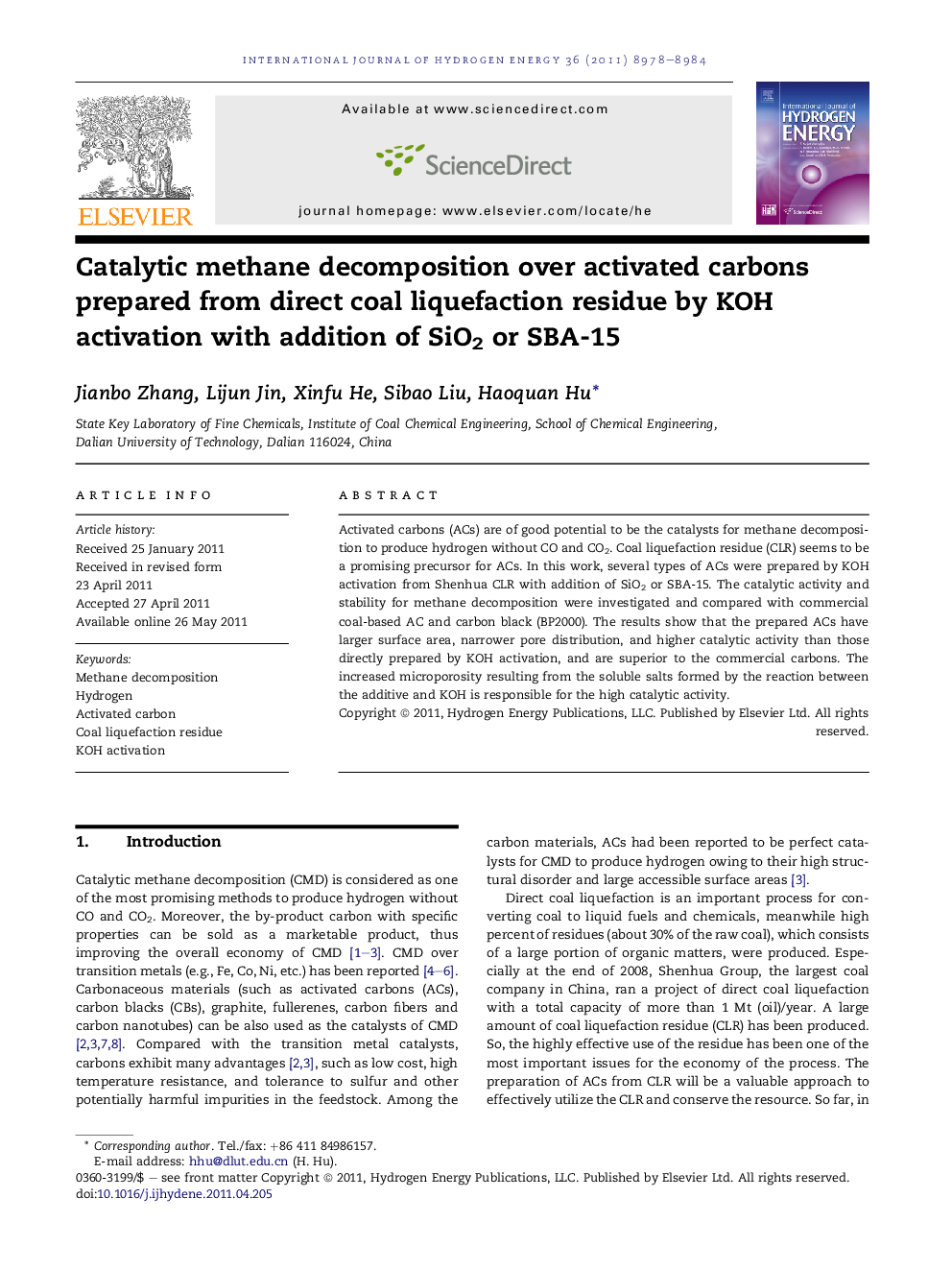| Article ID | Journal | Published Year | Pages | File Type |
|---|---|---|---|---|
| 1282491 | International Journal of Hydrogen Energy | 2011 | 7 Pages |
Activated carbons (ACs) are of good potential to be the catalysts for methane decomposition to produce hydrogen without CO and CO2. Coal liquefaction residue (CLR) seems to be a promising precursor for ACs. In this work, several types of ACs were prepared by KOH activation from Shenhua CLR with addition of SiO2 or SBA-15. The catalytic activity and stability for methane decomposition were investigated and compared with commercial coal-based AC and carbon black (BP2000). The results show that the prepared ACs have larger surface area, narrower pore distribution, and higher catalytic activity than those directly prepared by KOH activation, and are superior to the commercial carbons. The increased microporosity resulting from the soluble salts formed by the reaction between the additive and KOH is responsible for the high catalytic activity.
► Carbon catalyst from coal liquefaction residue was used for methane decomposition. ► Some additives were introduced to KOH activation to improve the catalytic activity. ► The carbon catalyst has an improved porous structure and higher catalytic activity. ► Soluble salts formed by the additive and KOH are conducive to create nanopores.
